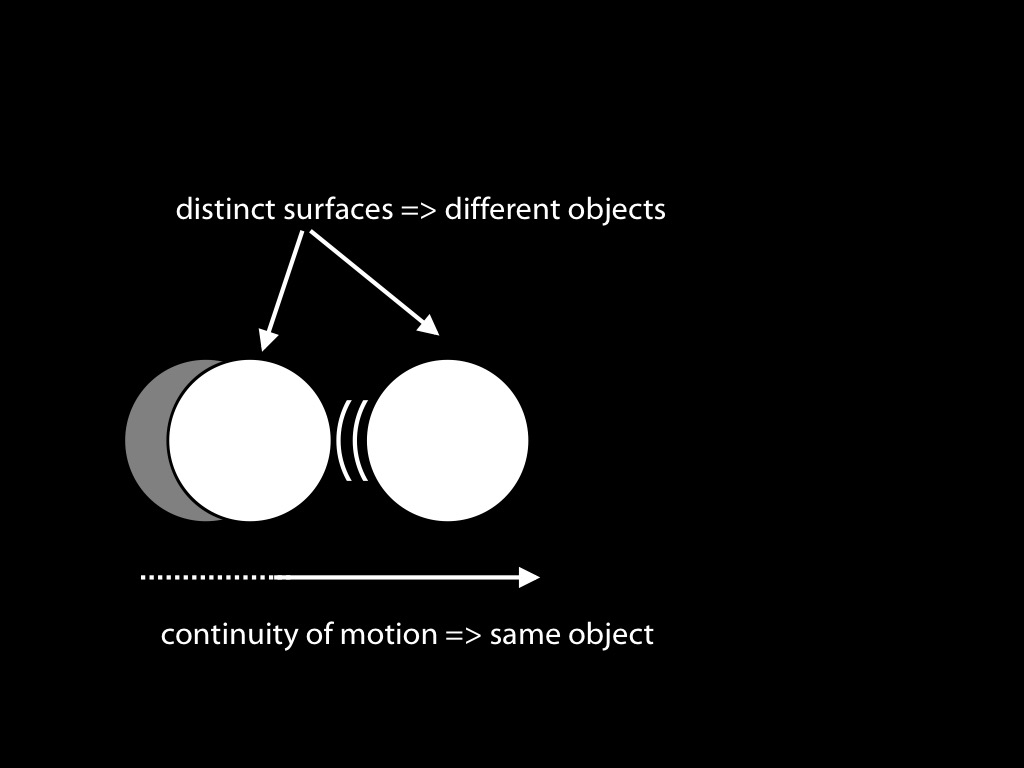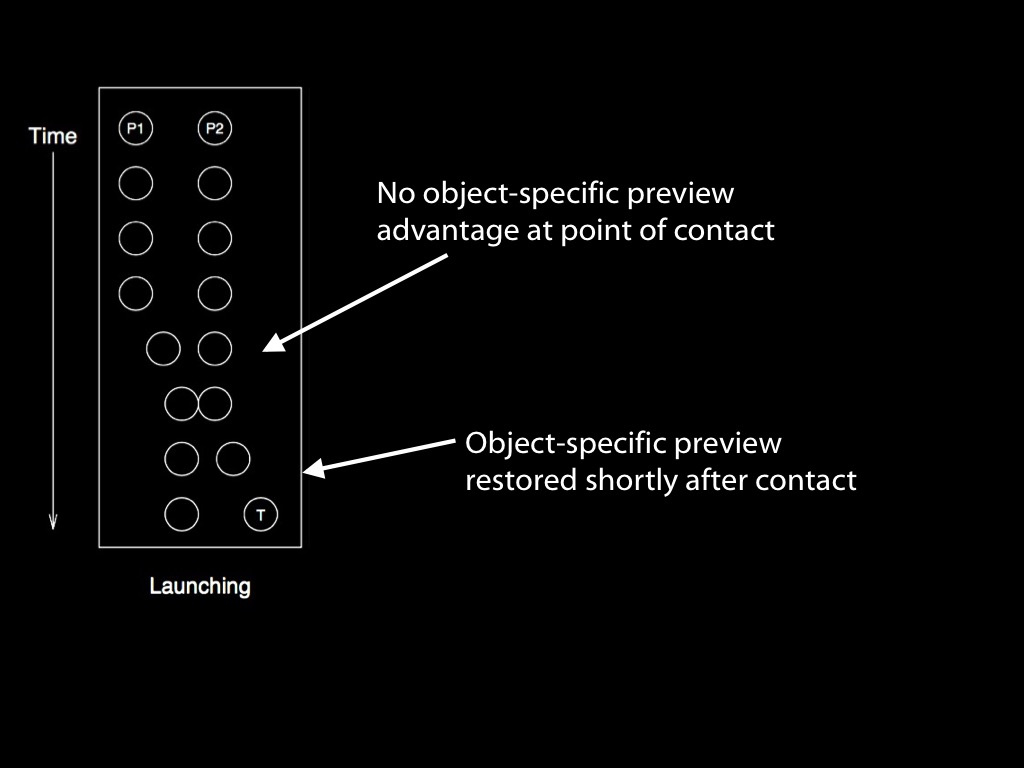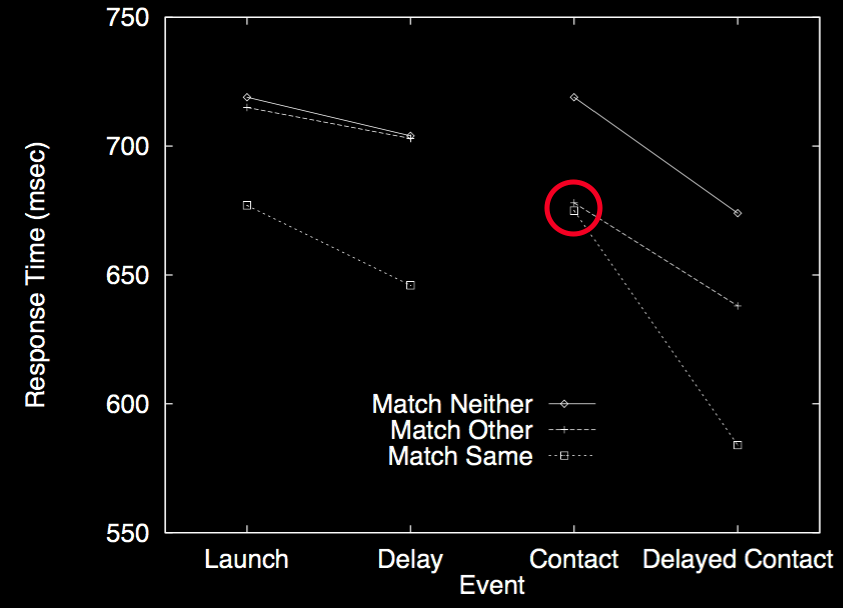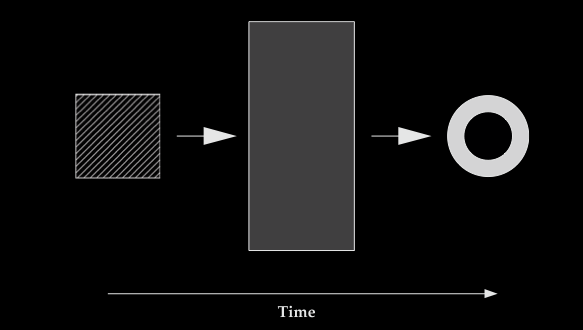Click here and press the right key for the next slide (or swipe left)
also ...
Press the left key to go backwards (or swipe right)
Press n to toggle whether notes are shown (or add '?notes' to the url before the #)
Press m or double tap to slide thumbnails (menu)
Press ? at any time to show the keyboard shortcuts
Object Indexes and the Launching Effect
How to get beyond intuition?
The launching effect: detecting a 50ms difference in the delay between two movements.
- How is launching detected? For example, does it involve perceptual processes?
- Why is a delay of up to around 70ms consistent with the launching effect occuring?
object indexes require tracking some causal interactions ...

preliminary evidence

Kruschke and Fragassi, 1996 figure 2 (part)

Kruschke and Fragassi, 1996 figure 2

Kruschke and Fragassi, 1996 figure 3
‘Unfortunately, this preliminary study has not received any published follow-up work, to our knowledge, so it is not clear if it would also generalize beyond highly specific contrasts.’
Choi & Scholl, 2006 p. 108
‘the movement performed by object B appears simultaneously under two different guises: (i) as a movement (belonging to object A), (ii) as a change in relative position (by object B)’
Michotte 1946 [1963], p. 136
‘the physical movement of the object struck gives rise to a double representation. This movement appears at one and the same time (a) as a continuation of the previous movement of the motor object, and (b) as a change of relative position (a purely spatial withdrawal) of the projectile in relation to the motor object.’
Michotte 1946 [1963], p. 140
Causal Object Index Conjecture:
Predictions:
i. Where there is perception of causation, there will be errors (or error-like patterns) in the assignments of object indexes.
ii. Factors that can influence how object indexes are assigned or maintained can influence perception of causation.
‘Michotte and his followers worked out many of the factors which mediate the perception of causality, such as the role of absolute and relative speeds, spatial and temporal gaps in the objects' trajectories, differences in the durations and angles of each object's trajectory, etc ...
‘This research has generally shown that many different spatiotemporal parameters are critical for perceiving causality, but that featural parameters (eg colors, shapes, sizes) play little or no role.’
Scholl and Nakayama 2004, p. 456

Scholl 2007, figure 4
Causal Object Index Conjecture:
Predictions:
i. Where there is perception of causation, there will be errors (or error-like patterns) in the assignments of object indexes.
ii. Factors that can influence how object indexes are assigned or maintained can influence perception of causation.
dissociations between the launching effect and causal reasoning (Rips 2011)
Causal Object Index Conjecture:
Predictions:
i. Where there is perception of causation, there will be errors (or error-like patterns) in the assignments of object indexes.
ii. Factors that can influence how object indexes are assigned or maintained can influence perception of causation.
Causal Object Index Conjecture:
Potential objections:
i. Adaptation effects [see appendix]
ii. Rips-Leslie argument from the Pulfrich double-pendulum illusion [see appendix]
How to get beyond intuition?
The launching effect: detecting a 50ms difference in the delay between two movements.
- How is launching detected? For example, does it involve perceptual processes?
- Why is a delay of up to around 70ms consistent with the launching effect occuring?